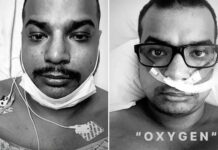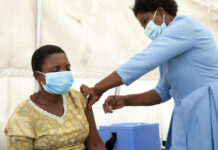You’ve been cooped up for weeks and your days are running together. The end is not in sight. Here’s what you need to know about the coronavirus pandemic right now.
Is it safe for me to go outside?
For most people, absolutely, experts say. The outdoors may preserve your sanity — and save social distancing itself.
“If we don’t encourage people to get outside, we will have a widespread social insurrection,” said Jeanne Marrazzo, director of the division of infectious diseases at the University of Alabama at Birmingham. “People are already challenged by the isolation imposed by social distancing, and we could be talking about another six to eight weeks, maybe more in some parts of the country.”
Experts say if you maintain a six-foot distance from other people, you should be even safer outside than in a closed area.
When outdoors, “you don’t have to stay six feet away from your spouse or child,” said Maria Raven, chief of emergency medicine at the University of California at San Francisco. “But if you are meeting a friend for a hike or going to the grocery store, keep your distance.”
Dog walking is a good activity — if you have a six-foot leash that allows your dog to greet canine friends without your having to get too chummy with other owners. If you are a senior or someone who is chronically ill has a suppressed immune system, you might want to see if you can get prescriptions and groceries delivered, or send a younger relative to pick them up.
If I’m older, do I have to stay inside all the time?
It’s hard to generalize, Marrazzo said, because “some 70-year-olds run marathons, so you can’t make a blanket statement about people’s risks.” But conditions such as chronic obstructive pulmonary disease, heart disease, and diabetes raise people’s risks of becoming severely ill or dying of COVID-19, the disease caused by the coronavirus. And even healthy seniors, she said, “don’t get a complete pass” on increased risk.
What about masks? Should I wear one?
The Centers for Disease Control and Prevention recently recommended that people should wear face coverings in public places to slow the spread of the virus, a reversal of the Trump administration’s previous recommendations.
The CDC’s website says the agency recommends the coverings for “public settings where other social distancing measures are difficult to maintain (e.g. grocery stores and pharmacies) especially in areas of significant community-based transmission.”
The recommendation was announced Friday by President Trump, who stressed
the guidance was voluntary and said he wasn’t planning to wear a mask. The guidance was issued after a vigorous debate within the administration. Some officials wanted the recommendation targeted primarily to locales that are being especially affected by the virus.
But health officials argued universal masking was necessary, pointing to new data that shows a high proportion of infected people may not exhibit symptoms, even as they spread the virus by emitting droplets when they talk, sneeze or even exhale. A mask — or some kind of cloth faces covering such as a bandanna or scarf — keeps those people from infecting others, they say.
Health officials made clear the general public should avoid using the kind of gear — N95 respirators or surgical masks — that is in short supply and is desperately needed by health-care workers.
Some experts say there may be drawbacks as well as benefits to wearing masks. Raven says it may give people a false sense of security and result in a lessening of social distancing. If a mask is uncomfortable, others say, it may prompt you to touch your face more — and accidentally infect yourself if your finger is contaminated. Also, they said, there are some indications the moisture that collects may encourage a buildup of viruses and bacteria on a cloth mask.AD
What do I do if my spouse gets sick?
It depends. If you have been with the person day and night for several days, you may already be exposed. Still, you can’t know for sure, and doctors say it’s wise to err on the side of caution and distance yourself as much as possible.
Most cases of COVID-19 are mild, and a spouse probably will be able to take care of himself or herself. If possible, the ill spouse should move into an extra bedroom, use a different bathroom and wear a mask to protect others in the household.
If you are living with someone who needs help, you should wear a mask and gloves while providing care. If you are removing a dinner plate, for example, grab it with a dishrag or wear gloves, doctors say.
What are the symptoms of COVID-19?
A few months into the crisis, we now know the disease has a far wider range of symptoms than initially thought. In addition to fever, coughing, shortness of breath and other flu-like symptoms, doctors are seeing gastrointestinal problems — nausea and vomiting, for example — chest pain and a loss of smell. Some doctors report brain inflammation and pinkeye in patients. It’s not clear, physicians say, whether the varied symptoms are caused by COVID-19 or are just occurring at the same time.AD
What do I do if I think I’m infected?
Consult with your primary care doctor, if you have one. Don’t go to the physician’s office or the emergency room without calling ahead. The coronavirus is highly contagious, and doctors want to protect themselves and other patients from infection. You’ll probably be advised to self-quarantine and, because there is no effective treatment for the disease, to take over-the-counter medicines such as Tylenol or Motrin.
If symptoms get worse, and you have trouble breathing or have underlying medical conditions, seek immediate medical care.
Will I be tested?
It depends on where you live, and even what hospital or health system you use. Some patients will have much more access to testing than others. At UCSF, for example, the testing has ramped up sharply in recent days in the hospital and outpatient clinics, Raven said. But the health system doesn’t test people who don’t have symptoms — the so-called worried well.AD
In many places, testing remains sluggish despite the entry of commercial labs and the approval of new rapid tests by the Food and Drug Administration. In some cases, the labs are simply overwhelmed by the demand. In others, they are still struggling with shortages of critical items, including nasal swabs and chemical components needed to run the tests.
What about home tests?
The FDA hasn’t approved home tests for COVID-19. It has taken a step in that direction — it says it’s okay for patients to swab their own nasal passages under the supervision of a health-care worker. But it says it is still waiting for data showing that home testing will work. Some health experts are pressing for such tests, saying they would vastly expand testing. Others fear they could mistakenly tell people they don’t have COVID-19 when they do.
When will this end?
No one knows, though experts say the better the United States is at social distancing, the better the chance the nation gets through this difficult time more quickly and with fewer serious illnesses and deaths. It isn’t clear yet whether the virus is seasonal and will go away in the warmer months.
Some experts say places such as New York, which have been hit hard, might see their peak number of illnesses soon — in mid-to-late April or shortly thereafter. Other areas that are just now showing signs of the virus spreading through their communities may peak later.
Even after the United States emerges from its most restrictive shutdowns, it’s possible Americans will still have to maintain some measures — such as isolating the infected, regular hand-washing, some degree of social distancing — until a viable vaccine is developed, which could take 12 to 18 months.








